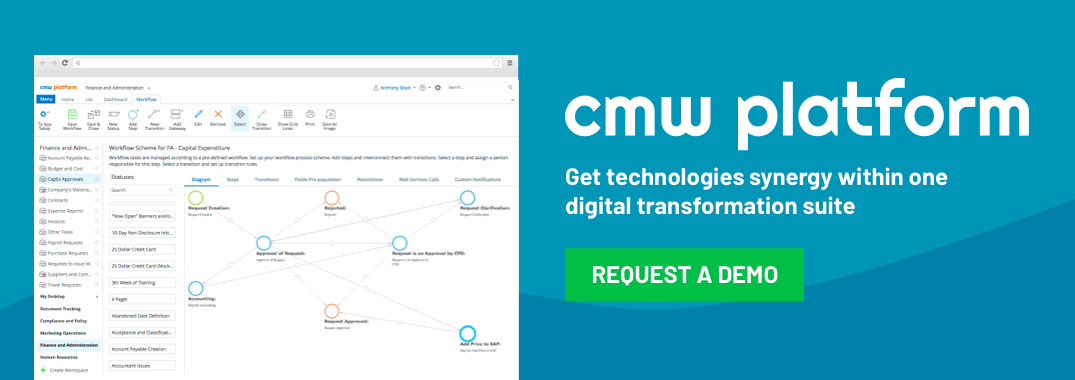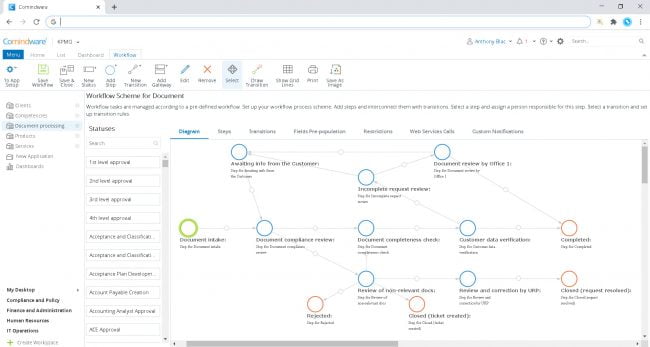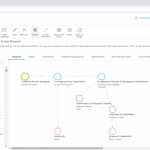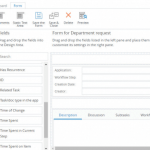How to Handle ERP Workflow Effectively
April 13, 2021
Enterprise resource planning, or ERP, involves the management of the most important business processes in an integrated manner, most often through the use of advanced software. Just thinking about an ERP for a basic process, there are tons of different workflows, or steps, that are involved in the process. These steps may also involve other departments as well.
Each process will relate to important information stored in the ERP, but the workflow may be particularly complicated for some processes and a lot of basic ERP software may not be up to the task of handling such complex functions. It may lack the ability for different forms of automation.

How Workflow Automation Can Help
One way to handle more complex processes that may be beyond the functionality of ERP systems, workflow automation is a great addition that can help. Automation software can be used independently or integrated within the ERP system.
In this type of solution, the ERP will remain the backend database but the automated systems can obtain data and connect said data to the right people in the process with ease. This automation software makes it easier to handle more complicated processes that basic ERP software often just cannot handle.
Benefits of Pairing ERP and Workflow Automation Software
Separately, each of these software suites may have uses, but their benefit may be limited depending on their implementation. However, when you use ERP and workflow automation software in tandem, you get a range of very useful benefits for your business operations.
With this pairing, you can create multiple types of the approval process, whether it is a single or group approval that needs to occur for a given process. You can run parallel workflows with this pairing, which improves the efficiency by which processes are initiated.
You can set up a range of reminders, notifications, and even things like a time-out to simplify the process and make sure all parties are on the same page. With this pairing, you can more easily track the progress of the process or an individual step within the process.
This pairing will also allow you to create a range of powerful dashboards and other mechanisms of tracking and checking the performance of different aspects of the business process. You will also have a comprehensive documentation process, which helps with compliance and in the event you need to audit part or all of a process.
You can use powerful automation and logic tools with this pairing that cannot be used with ERP alone. It also allows for the incorporation of CSS, which can allow for easier creation of charts and spreadsheets.
By combining ERP and workflow automation software, you will have better access to more reliable information. Information can more easily be shared and thus tasks can be completed in a more effective and time-efficient manner. With this pairing, you can handle more complex processes that would otherwise be too difficult to manage with an ERP system alone.
 Extend your ERP’s workflow capabilities with workflow management software and get both processes and forms flexible.
Extend your ERP’s workflow capabilities with workflow management software and get both processes and forms flexible.With a document trail, you also have the peace of mind that there is proper documentation in the event that a process needs to be revisited or audited.
In Closing
ERP is a highly important part of business operation as it involves the management of the most important business functions. This is a powerful repository of information and when used in tandem with other software, can be a very useful and powerful means of managing even the most complicated business processes. When combining the use of ERP software with workflow automation software, you can easily manage information and the various tasks that are involved with even the most complicated business processes.
While these software suites are powerful on their own, their use individually is limited. When used together, you can create varied approval processes, depending on the type of process it is. You can run parallel workflows, which will improve efficiency. You can set up reminders and notifications that keep all parties on task and working towards the ultimate goal of process completion.
It is easier to track the progress of individual steps and you can use the pairing to create logic tools to make better sense of the information. Pairing these technologies helps to create an important document trail that can be incredibly important as a part of compliance reporting or in the event that a process is audited. Having all this information readily available makes the process of auditing far easier and far more effective. Combining these technologies really improves your ability to better manage workflow and important processes.



